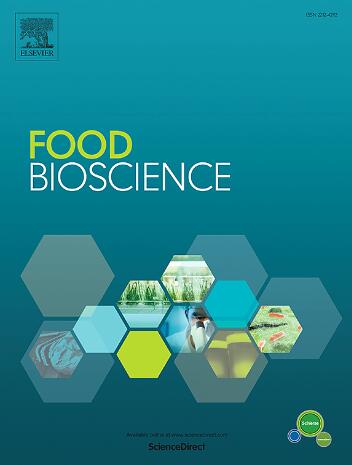Revealing the inhibitory mechanism of carvacrol on physiological function and virulence expression of L. monocytogenes by transcriptome analysis
IF 5.9
1区 农林科学
Q1 FOOD SCIENCE & TECHNOLOGY
引用次数: 0
Abstract
Foods in our daily life are susceptible to contaminate by L. monocytogenes due to its high stress resistance and wide distribution, which poses great risks to food safety. Carvacrol is the natural compound that has been recognized as the safe additives and can be utilized safely by food industry. The current study aimed to study the inhibitory effect and mechanism of carvacrol against L. monocytogenes. The results showed that carvacrol treatment resulted in disruption of cell integrity of L. monocytogenes, further led to leakage of intracellular substances. In addition, carvacrol treatment inhibited the activity of topoisomerase and β-galactosidase, which in turn affected the gene duplication and energy utilization of L. monocytogenes. Based on transcriptome analysis, it was found that 126 differential expression genes (DEGs) were existed between carvacrol treated groups and control groups, which were highly enriched in transmembrane transporter activity and transporter activity. In addition, those DEGs were enriched in 4 metabolic pathways with obvious enrichment including phosphotransferase system, starch and sucrose metabolism, quorum sensing, alanine, aspartic acid and glutamic acid metabolism. Finally, carvacrol treatment can inhibit the secretion or activity of hemolysin in L. monocytogenes, which was consistent with the result in transcriptome analysis. In conclusion, carvacrol could be a potential antimicrobial substance to inhibit the contamination of L. monocytogenes in foods.
通过转录组分析揭示香芹酚对单核增生乳杆菌生理功能和毒力表达的抑制机制
单核增生乳杆菌抗逆性强,分布广泛,在日常生活中极易受到污染,给食品安全带来很大风险。香芹酚是一种被公认为安全添加剂的天然化合物,可以在食品工业中安全使用。本研究旨在研究香芹酚对单核增生乳杆菌的抑制作用及其机制。结果表明,香芹酚处理可破坏单核增生乳杆菌的细胞完整性,进一步导致细胞内物质渗漏。此外,香芹酚处理抑制了拓扑异构酶和β-半乳糖苷酶的活性,从而影响了单核增生乳杆菌的基因复制和能量利用。转录组分析发现,香芹酚处理组与对照组之间存在126个差异表达基因(deg),这些差异表达基因在跨膜转运蛋白活性和转运蛋白活性上高度富集。此外,这些deg在4条代谢途径中富集,富集程度明显,包括磷酸转移酶系统、淀粉和蔗糖代谢、群体感应、丙氨酸、天冬氨酸和谷氨酸代谢。最后,香芹酚处理可以抑制单核增生乳杆菌溶血素的分泌或活性,这与转录组分析结果一致。综上所述,香芹酚可能是一种抑制食品中单核细胞增生乳杆菌污染的潜在抗菌物质。
本文章由计算机程序翻译,如有差异,请以英文原文为准。
求助全文
约1分钟内获得全文
求助全文
来源期刊

Food Bioscience
Biochemistry, Genetics and Molecular Biology-Biochemistry
CiteScore
6.40
自引率
5.80%
发文量
671
审稿时长
27 days
期刊介绍:
Food Bioscience is a peer-reviewed journal that aims to provide a forum for recent developments in the field of bio-related food research. The journal focuses on both fundamental and applied research worldwide, with special attention to ethnic and cultural aspects of food bioresearch.
 求助内容:
求助内容: 应助结果提醒方式:
应助结果提醒方式:


